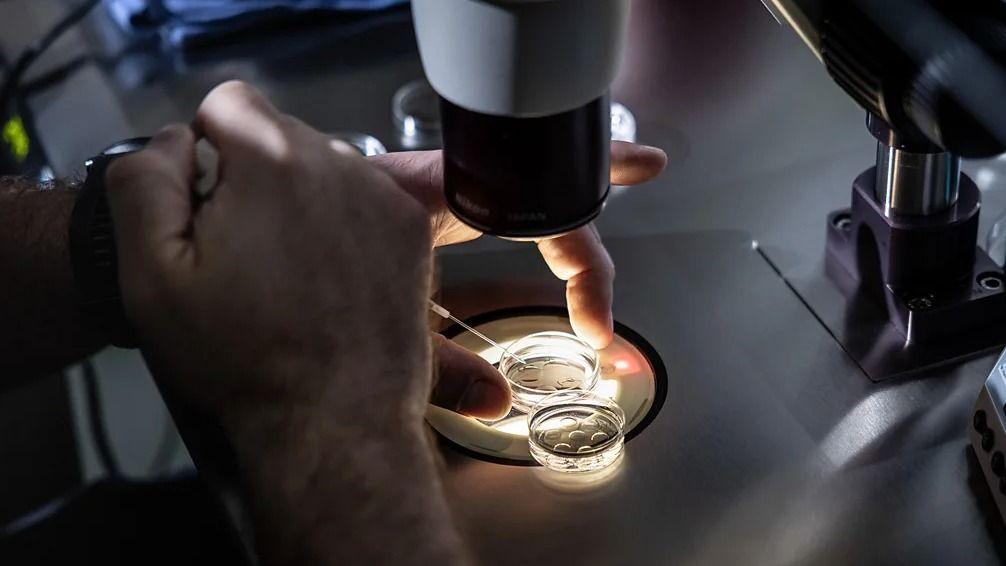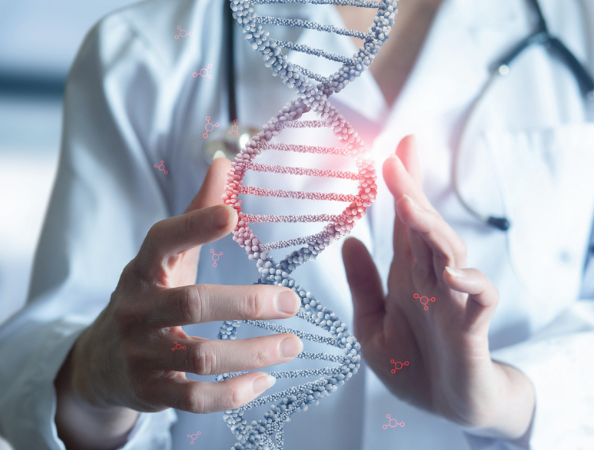A pioneering in vitro therapy reduces the risk of mitochondrial diseases in infants.

A pioneering in vitro fertilization technique developed in the United Kingdom has led to the birth of eight completely healthy babies to seven women at high risk of transmitting serious mitochondrial diseases , according to a study published Wednesday.
This highly heterogeneous pathology, which affects approximately one in every 5,000 children and causes a wide variety of rare diseases, prevents the proper functioning of mitochondria, which are responsible for generating the energy necessary for the development and proper function of the body's organs and systems .
Now, a team of scientists from Newcastle University (northern England) has managed to reduce the likelihood of this hereditary disease developing in eight babies, four boys and four girls, thanks to a technique called " pronuclear transfer ."
"Mitochondrial disease can have a devastating impact on families. Today's news offers new hope to many more women at risk of passing on this condition," said Doug Turnbull, one of the team members, at a media briefing in London.
Turnbull presented the results of this ambitious study alongside lead author Professor Mary Herbert, Dr. Louise Hyslop, and Professor Bobby McFarland to dozens of journalists at the Science Media Center in the British capital.

The eight babies, who are now between 1 and 24 months old, are developing normally. Photo: Getty Images
After an egg is fertilized, the nuclear genome—which contains individual characteristics such as hair color or height—of a woman with the mitochondrial mutation is transplanted into another egg from an unaffected donor whose nuclear genome has been removed.
This 'mixing' of both eggs results in a healthy one that inherits the DNA of its parents except for the mitochondrial DNA, which comes from the donated egg. This does not completely prevent the occurrence of this type of pathology, but it does significantly reduce it.
The results of the study, which was completed yesterday and is published in two articles in The New England Journal of Medicine, reflect a reduction in the levels of mitochondrial DNA that causes rare diseases, which ranged from "undetectable" to 16% in neonatal blood .
"The findings are cause for optimism. However, research to better understand the limitations of mitochondrial donation technologies will be essential to further improve treatment outcomes," said Mary Herbert, the study's senior author.
The eight babies, now between 1 and 24 months old, including a pair of identical twins, were born healthy and are developing normally, and the team notes that three of them outgrew some early health problems that they believe cannot be directly attributed to the mitochondrial donation.
All children are participating in an 18-month developmental study, and at the time of the report's publication, all were meeting their relevant developmental milestones.
However, the team emphasized the importance of continuing these follow-ups to detect any patterns in their conditions, which will extend up to five years.
Encouraging results but with caution These initial results are encouraging, but they still need to be viewed with some caution, according to researchers from various institutions, who also warn of ethical questions.
Experts not involved in the research comment on these findings in statements collected by the Science Media Centre, a platform for scientific resources for journalists in various countries.
For Nils-Göran Larsson of the Karolinska Institute in Sweden, the publication is very important and represents a breakthrough in mitochondrial medicine. " This advanced procedure is not a treatment for the disease, but rather an intervention that minimizes the transmission of mutated mitochondrial DNA (mtDNA) from mother to child ."
"For the affected families, this is a very important reproductive option," the researcher emphasizes, describing the data now presented as showing that no mutated mitochondrial DNA was detected in the blood of five of the children born; however, low levels were observed in three children.
"These low levels are unlikely to cause mitochondrial diseases, but additional follow-up studies are needed," Larsson notes, adding that "as always, when it comes to new medical procedures, they need to be validated by independent studies."
Heidi Mertes, associate professor of medical ethics at Ghent University, Belgium, says: "I am pleased to see that the first results from the Newcastle University group have finally been published (...) and that the eight children born using this technique are in good health." "However, while the results demonstrate that the technique is feasible and can lead to a substantial reduction in mutational burden, they also highlight that we must proceed with great caution."

The combination of nuclear and mitochondrial DNA could have unknown long-term effects. Photo: iStock
The study also raises ethical and scientific questions. Combining nuclear and mitochondrial DNA from different people could have long-term effects that are still unknown. Therefore, the researchers emphasize the need for rigorous monitoring of these children, which in this case will extend until they are five years old. They also insist that this procedure should only be used when there are no other viable reproductive alternatives.
This breakthrough represents "new hope" for many families, but "it also demands caution, transparency, and a broad ethical debate about the limits and responsibilities of genetic medicine."
eltiempo





